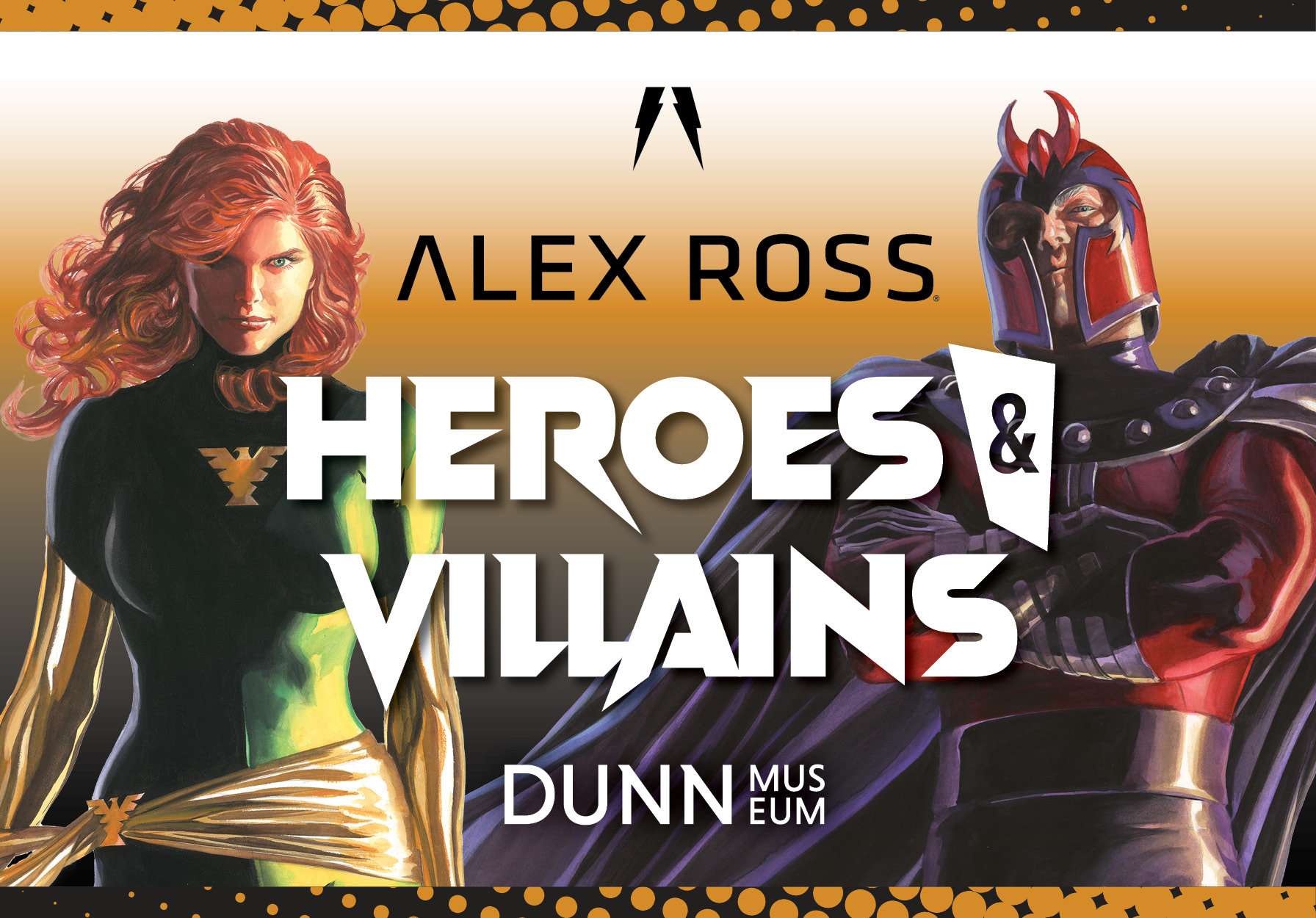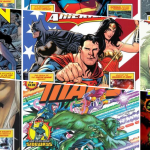Alex Ross: Heroes & Villains Exhibition at the Dunn Museum

I’ve lived in the Northwest suburbs of Chicago my entire life and haven’t visited the Bess Bower Dunn Museum until I went to the Alex Ross: Heroes & Villains Exhibition.
Alex Ross began his comics career in the early ’90s, in the five-issue miniseries Terminator: The Burning Earth (NOW Comics), before beginning work with comic giants DC and Marvel. Since, Ross has had a hand in several superhero titles, film and television, and toy design. His most notable works include Kingdom Come (DC), Astro City (Image/ Homage), Marvels (Marvel), as well as several personal collections of art. Ross’s art is ubiquitous with the comic book medium and has earned him several Eisner Awards and Harvey Awards. And of course, Ross’s collection of Marvel’s Heroes & Villains, which make up the core of the gallery.
The gallery is “the first to host the largest arrangement of Alex Ross art for public viewing, featuring over 100 pieces of art including individual full-size portraits of iconic superheroes and villains and three life-size murals that capture each character’s attitude, naturally influencing their poses” according to the museum. These pieces date back to the late ’90s, as well as two new pieces of Harley Quinn and The Joker created for the show.
To see Ross’s work up close enhances it with a new sense of life. The poses are dynamic, with characters often appearing in mid-motion – dramatic capes blowing in the wind or shadows casted on their costumes. Their realism returns the humanity to these heroes and villains, who are often mythologized in their comics and by their fans. Ross pays close attention to their faces, showcasing the minutia of their features to express thoughts and personality. Despite the attention to detail and realism, the colors remain vibrant and playful – harkening back to the classic costumes and the majesty that comes from superheroes.

The portrait of Spider-Man particularly caught my eye. Unlike many of the other heroes, no part of his face or eyes are seen. It would be easy to make him appear flat or cartoonish on the page. Yet, Ross manages to play with texture and anatomy to bring him to life. He writes in his Heroes collection, “Spider-Man’s first impression on me was as a real person wearing a costume.” He notes wanting to capture the hand-sewn elements of the costume and how the city’s polluted air would impact the color.
Yet, the part that struck me most was how he managed to capture Peter Parker’s face beneath the mask. It curves over his nose and mouth, catching the light as he cranes his neck upwards. You can see where his breath would press and warm against the fabric and how it would move when he speaks. All of this is captured in a perfectly still image.
The part that I found the most compelling, however, is how close you can get to the paintings. Unlike a usual art gallery, there is no glass or rope to keep you from getting close to the paintings. The light is clear and bright and the images pop off the white walls. In this fashion, you can see Ross’s art for what it truly is: human. You can see his pencil sketches against the outline of the characters and where the colors blended with each other. The paper is not pristine white, but met with the occasional light smudge.
It’s these unassuming elements that reminds us that art is a reflection of the human experience. It has flaws and sometimes deviates from the initial path. In the same fashion that Ross captures the inner personhood of each of the characters, posing their bodies, contorting their mouths, or letting their gaze drift just so – that his own personality shows through.
I think we often skip over the small details of things. We read comic books with the perfect final artwork plastered on the cover. The small flaws are removed and details are removed to preserve the quality of the image. But the Alex Ross exhibit is a reminder to look closer into the small things: that’s where our humanity shines.
I fear I also overlooked the Dunn Museum due to its size. Located in Libertyville Illinois, it might seem unassuming, but it too packs a super-powered punch. The care and dedication brought to framing the exhibit and making it a friendly place for visitors caught my eye, as did the rest of the museum’s collection. I thoroughly enjoyed the other permanent exhibits and greatly look forward to the insight and inspiration future exhibits will bring me.
This exhibit is a must-see for comic fans, artists, designers, or anyone looking to appreciate the beautiful, little details of life. The exhibition runs June 29, 2025 through February 16, 2026.
Author: Abby Kirby
Abby Kirby is an English teacher and fan studies scholar. She holds an M.A. in Media and Cinema Communications from DePaul University.
Help support independent journalism. Subscribe to our Patreon.
Copyright © The Geekiary
Do not copy our content in whole to other websites. If you are reading this anywhere besides TheGeekiary.com, it has been stolen.Read our






